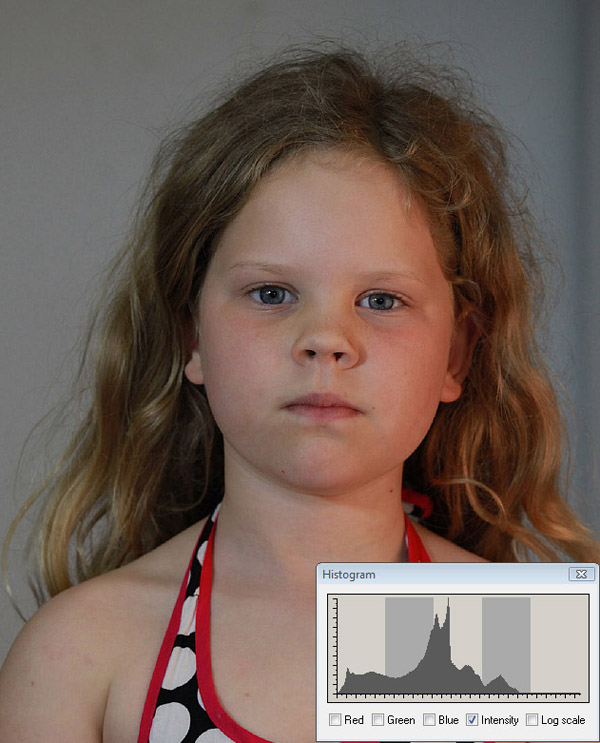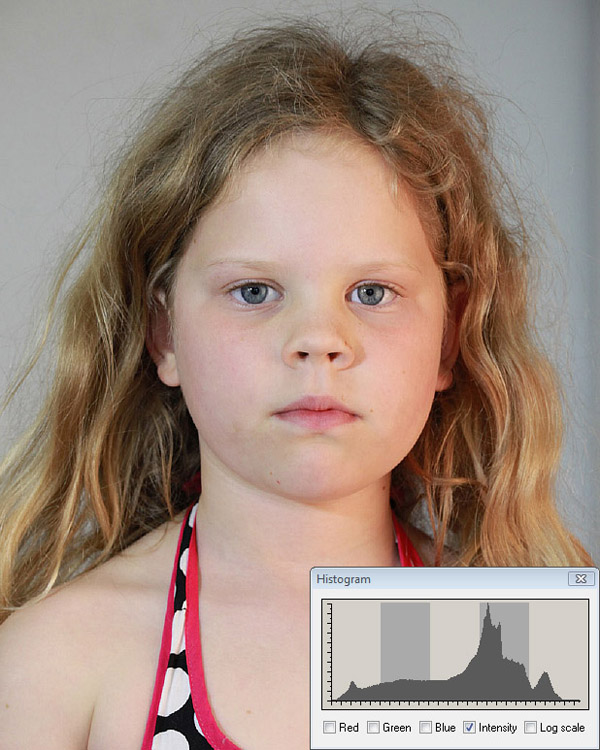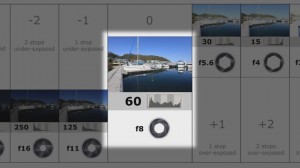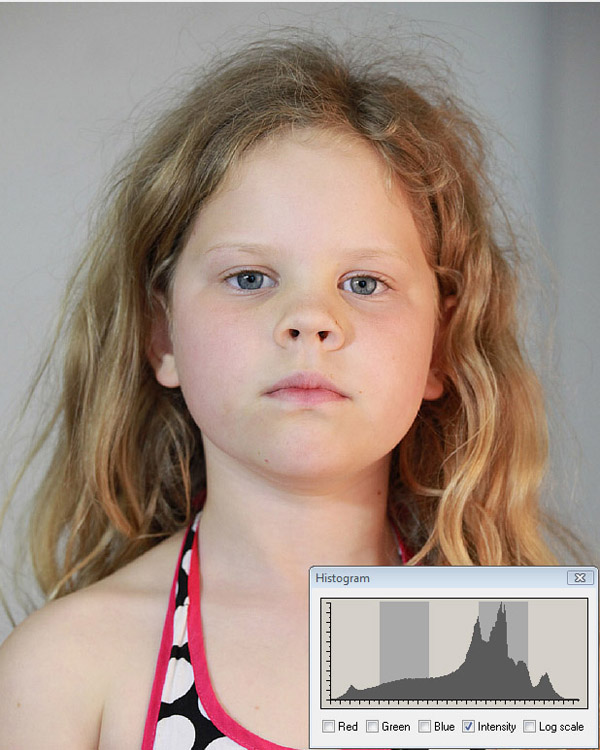Example 2: Constant aperture, adjusting time & exposure.
Here is the example we used in the exposure training video. We used a constant Aperture and ISO, and only changed the shutter speed to change the exposure.
1 F-Stop Under-exposed (darker)

This image is 1 f-stop under-exposed, notice the shutter speed is double that of 1/60th second. At 1/125th of a second will let in half the light, the shutter is only open for half the time. Because this image is under-exposed we start to lose details in the darkest (shadows) part of the print.
Properly Exposed

This image is properly exposed at 1/60th second. There are details in the lightest and darkest parts of this image. This image is 1 f-stop over-exposed, notice the shutter speed is half that of 1/60th second, at 1/30th second.
1 F-Stop Over-exposed (lighter)

This will let double the light into the camera. Because this image is over-exposed, notice we start to lose details in the brightest (highlights) parts of the image.
Example 3: Constant exposure, adjusting aperture & time.
Here is another example we used in the exposure training video. We used a constant ISO, and changed the shutter speed and aperture to keep the exposure constant.
Properly exposed:
T=60
A=f8
ISO=100 (fixed)
T = Time = Shutter Speed
A = Aperture = Size of the Aperture/Hole
Lets say we increase the shutter speed to 1/125th second.
This means the shutter is open for half the time, therefore half the light enters the camera.
This will under-expose our image by 1 stop, because less light is allowed to enter the camera.
How can we compensate for less light?
By opening the aperture by 1 stop, which will let in more light (bigger hole). So we increase the aperture hole from f8 to f5.6
Properly exposed:
T=125 (was 60)
A=f5.6 (was f8)
ISO=100 (fixed)
T = Time = Shutter Speed
A = Aperture = Size of the Aperture/Hole
What did we do here?
We increased the shutter speed (1/60th sec to 1/125th sec), thus decreasing the light that enters the camera.
To compensate for less light, we opened the aperture more (f8 to f5.6).
Practice makes perfect:
Have another look at these 3 examples, and then go out and try them for yourself. Try to keep the exposure constant by adjusting only the aperture and time (shutter speed), and do this all in Manual Mode. The key here is to practice this concept, and at first it may feel really foreign to you, but after a while it will become easy.
“
Next time we look at Histograms.


I purchased your training videos and have found them very easy to follow. However, the biggest challenge I’m having is how to properly adjust the exposure under fixed settings where I don’t have full control over the existing lighting e.g., school plays, game events, etc., and could only use an external flash mounted onto the camera. Any suggestion that I could try?
Dennis
Hi Dennis, glad you like my videos. When it comes to shooting in dimly lit areas like school plays etc, the best thing to do is crank your ISO up as high as it goes, maybe 3200 and shoot at as slow a shutter speed as you can hold the camera, maybe 1/60th second or 1/100th second with a normal lens 50mm or wider. Get as close as you can to the action and use your external flash to fill in the subjects. This will allow the ambient light to be the main light source and your flash to act as only a fill light, this will drastically improve your images (cause you will see the background) and give a more true-to-life capture of the even. So ISO=3200, Tv=60 and Av (let camera decide) and get close to action, and use wider angle lens.
Hope this helps. Brent
hey brent, thanks ur videos are really helping me….inshallah some day i will become a professional like u…..
regards
saad
I'm sure you will Saad – keep on going. Brent
Hey Brent
Nifty tips! Just yesterday a friend called me up with a complaint on lighting. He bought a Nikon D3000 and takes photos of his son’s wrestling matches and complains that at higher shutter speeds the photograph becomes “blurry”. So I explained to him the “grain” effect on high speed. Yeah, people always experience confusion with camera settings and these are handy tips.
Kind regards
Jack – South Africa
Thanks Jake. Planning on a trip to SA this June/July, cant wait. Brent